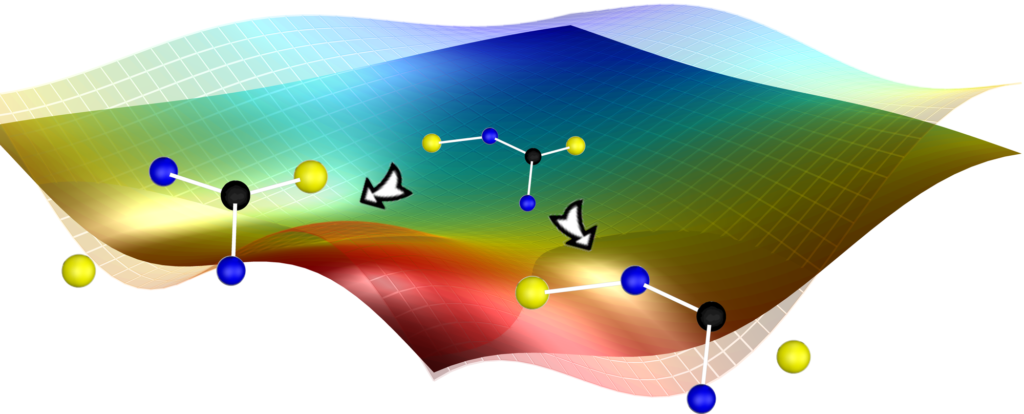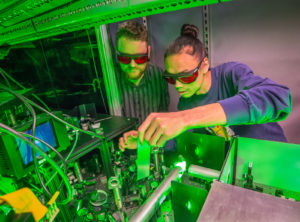We perform experimental research to reveal the underlying mechanisms of the intramolecular and intermolecular flow of charge and energy that drive chemical reactions and molecular transformations. We focus on the development and application of experimental techniques that monitor isomerization dynamics, charge- and energy-transfer, initiated by photons and low energy electrons. The research is supported by the Office of Basic Energy Sciences in the Office of Science of the U.S. Department of Energy.
Time-resolved particle momentum imaging using Cold Target Recoil Ion Momenum Imaging (COLTRIMS) and Velocity Map Imaging (VMI) with tabletop extreme ultraviolet (XUV) lasers
By measuring electrons and ions in coincidence with few femtosecond time resolved pump-probe schemes, one can follow the transitions of excited states on their PESs to reveal non-Born Oppenheimer behavior. We target small molecules in experiments on dissociative photoionization of excited states using femtosecond 2-color VUV and XUV pulses.
Ultrafast transient polarization spectroscopy (UTPS) to probe dynamics of molecules in excited electronic states.
Multidimensional nonlinear spectroscopies are powerful approaches to extract a high level of detail on reaction dynamics, even when the photoabsorption or photoelectron spectra are highly congested. With the aims of accessing extended timescales, from ultrafast to microseconds, these approaches allow the nonlinear response, and the correlated electronic and nuclear motion, of a system to be monitored on femtosecond timescales throughout a reaction path. These new experimental tools will be applied to gases, liquids and interfacial systems to probe the transient nonlinear response and electronic coherences by homodyne and heterodyne detection. When applied to XUV or soft x-ray drive and probe pulses, near or just below a core-to-valence resonance transition energy, UTPS will yield atomic site-specific information, over extended timescales.

Dynamics of dissociative electron attachment Fundamental understanding of electron driven chemistry of simple organic molecules is crucial for accurate models for radiation-induced chemistry in organic systems, atmospheric chemistry, and physical and chemical processes in the interstellar medium. Targeted fundamental studies of dissociative electron attachment (DEA) dynamics are investigated in a highly collaborative effort between specialists in experiment and theory. Detailed, highly differential momentum imaging of small systems, such as formic acid monomer, methanol, and formamide, maximize the overlap between the LBNL experimental and theory groups to interpret dynamics from momentum imaging using anion electronic structure calculations and the angular dependence of dissociation through electron attachment entrance amplitudes.
Bio
Dr Daniel S. Slaughter is a Staff Scientist in the Chemical Sciences Division at Lawrence Berkeley National Laboratory (2014-present). He earned his B. Sc. with Honours (Physics) in 2001 at Flinders University (Adelaide, Australia), and his Ph. D. (Physics, 2007) also at Flinders University. He gained postdoctoral experience at the Australian National University (2007-2010) and at Lawrence Berkeley National Laboratory (2010-2014).
